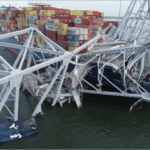The nation’s premier worker safety agency takes nearly eight years on average to adopt new safety regulations, government auditors said in a report.
The Occupational Safety and Health Administration takes far too long compared to other agencies, safety experts said during a Senate hearing on the report by the Government Accountability Office.
Critics claim the agency has become overly cautious in setting new rules on dangerous chemicals and other on-the-job hazards, hamstrung by procedural and political roadblocks.
The process for approving new regulations at OSHA averages about 50 percent longer than the Environmental Protection Agency and at least twice as long as the Transportation Department, auditors said.
“We have created barriers based on false alarms, and the need now is to lower them so that worker protection can proceed again without delay,” Michael Silverstein, former director of the Washington state OSHA program, told the Senate Health, Education, Labor and Pensions Committee. “It is no exaggeration to say that lives are at stake.”
Senate Democrats say the delays at OSHA are unacceptable while workers are being injured or killed. It took nearly a decade, for example, for OSHA to issue safety rules on construction cranes. In the meantime, several cranes toppled in accidents, and people were killed.
“It is simply unconscionable that workers must suffer while an OSHA rule is mired in bureaucracy,” said committee chairman Tom Harkin, D-Iowa.
OSHA officials blame lengthy waits on greater procedural requirements, shifting priorities and a higher standard of judicial review than most federal agencies face. Heavy pressure and litigation from business groups are also factors.
Revae Moran, the GAO’s director of education, workforce and income security, said sometimes OSHA will begin work on a set of regulations — construction scaffolding, for example — and then put it aside for years while focusing on other issues.
“Why it would take 19 years to set a scaffold standard doesn’t necessarily make sense,” Moran said, citing a 1996 rule.
Business groups claim OSHA creates problems for itself by ignoring employer concerns when it develops new standards. OSHA officials often don’t seek out industry guidance until after they make a risk assessment, said David Sarvadi, a lawyer representing the U.S. Chamber of Commerce.
“OSHA needs to talk to people before they sit down and start writing the rule,” Sarvadi said.
But saying the government needs more regulations is fraught with political risk in an election year. GOP presidential hopefuls and Republican lawmakers have made an issue of what they say is over-regulation by the Obama administration. President Barack Obama signed an executive order last year requiring federal agencies to target and eliminate burdensome rules, even as they issue new ones.
A quarter of OSHA safety rules approved since 1981 have taken more than a decade each to complete, with some being delayed nearly 20 years, according to the GAO report. The agency has studied the dangers of workplace exposure to silica dust — known to cause crippling lung disease and cancer — since 1974, but has yet to publish even a proposed regulation.
After putting out 47 new safety rules in the 1980s and 1990s, OSHA has slowed, approving just 11 new rules since then.
The GAO report recommended that OSHA officials collaborate more with the National Institute for Occupational Safety and Health, a federal research agency that makes workplace health and safety recommendations.
Randy Rabinowitz, director of regulatory policy at OMB Watch, a nonprofit advocacy group that monitors federal regulations, said OSHA should pick a few hazards and see those priorities through without shifting gears so often. She suggested the agency could also rely more on scientific evaluations prepared by other agencies to avoid duplicating work and get the industry to share more data during consultations.
Other ideas would require congressional action, such as amending federal law to change the tough judicial standards OSHA rules must meet.
Wyoming Sen. Mike Enzi, the committee’s top Republican, said OSHA can pursue safety by other means, not just with more regulations and stiffer enforcement. Enzi cited a voluntary program that encourages companies to improve safety to avoid costly litigation.
“Voluntary programs involving employees and management such as the Voluntary Protection Programs have been shown to make workplaces considerably safer and save money,” Enzi said. “Yet under the current administration, VPP has been threatened and undermined.”
Topics Legislation Workers' Compensation Commercial Lines Business Insurance Pollution
Was this article valuable?
Here are more articles you may enjoy.


 Single Loose Wire Led to Blackout That Caused Dali Crash Into Baltimore Bridge
Single Loose Wire Led to Blackout That Caused Dali Crash Into Baltimore Bridge  Lloyd’s Probing Conduct of Ex-CEO Who Had Been Set to Join AIG
Lloyd’s Probing Conduct of Ex-CEO Who Had Been Set to Join AIG  Ex-Lloyd’s CEO Lost $17 Million AIG Job After Office Romance
Ex-Lloyd’s CEO Lost $17 Million AIG Job After Office Romance  AM Best Downgrades State Farm Mutual Auto
AM Best Downgrades State Farm Mutual Auto 

